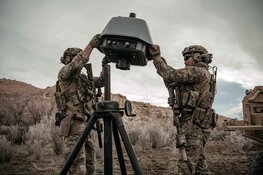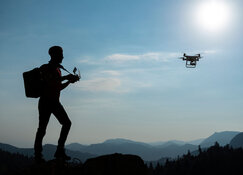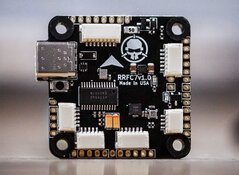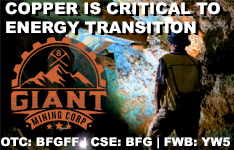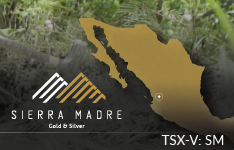DroneShield Ltd. (DRO:ASX; DRSHF:OTC) just released its Q2/24 results, and they show its growth strategies are working.
The 10-year-old company develops and provides artificial intelligence-powered hardware and software solutions for detecting and defeating drones.
"Every year of our existence we have reported record results," Chief Executive Officer (CEO) and Managing Director Oleg Vornik said in the recent earnings call. "When we started, we were one of the very original pioneers and we grew with the industry. We believe it presents a really strong opportunity for DroneShield going forward."
Sales Pipeline Doubles
The company's AU$1.1B sales pipeline comprises 110 prospective projects for high-quality government customers, primarily in the U.S. (44 projects), its largest buyer, but also in the United Kingdom, Australia, Europe, Asia and, to a lesser but growing extent, the Middle East, Vornik explained.
He attributed most of the pipeline growth to projects for governments in Asia looking to beef up investment in counter unmanned aerial systems (CUAS) given the threat coming from China. Other factors include the expanding use of drones in defense worldwide and the concurrent need for counterdrones.
"We have been working with all of those customers for years," said Vornik. "We're ready, and we have the right relationships to take advantage of those opportunities."
Signs of Growth
The new financial results show DroneShield had its best ever first half of a year (H1). Historically the second half tends to be stronger, particularly the fourth quarter.
In H1/24, the antidrone company generated AU$24.1 million (AU$24.1M) of revenue, an amount 110% higher than the AU$11.5M in H1/23. Cash receipts totaled AU$21.4M, reflecting a 40% year-over-year increase. DroneShield's largest business segment out of three, software-as-a-service, providing device software updates, yielded AU$1.3M in revenue, nearly double that (93%) of a year ago. The other two lines of business are hardware and electronic warfare.
At Q2/24's end, or June 30, 2024, DroneShield's contracted project backlog stood at AU$28M. Its cash balance was AU$146M, including AU$115M from the equity raise done earlier this year. Debt was $0.
Operationally in Q2/24 to keep up with growth, the company began acquiring a significant amount of inventory. It expanded its staff to 151 individuals, including 114 engineers in various fields, established a dedicated data engineering team and engaged several on-the-ground salespeople in various ex-Australia countries. It signed a lease for another 1,800 square meters of space at its Sydney HQ facility effective as of this August, taking the total to 3,900 square meters.
Well-Positioned for Growth
Moving forward, DroneShield remains focused on growth, Vornik said, primarily in the defense sector, currently accounting for about 75% of its revenue, but also in civilian applications of CUAS, at airports, stadiums and events, critical infrastructure, prisons, corporations and the like.
The total addressable worldwide market, the CEO added, is about US$10 billion in value.
In April, the company received the first-of-its-kind, signed North Atlantic Treaty Organization (NATO) framework agreement, meaning European NATO countries may place orders with DroneShield.
"We expect for it to drive material sales," Vornik said.
DroneShield has characteristics that differentiate it from other companies and afford it an advantage, noted Chief Technology Officer Angus Bean in the earnings call. The company has been in the counterdrone space since its origin and provides a diverse set of CUAS products and solutions, including the hardware, software and back end infrastructure. The defense firm can tailor solutions to customers' needs and budget. It always is evaluating new technologies in light of new threats and is open to developing new offerings.
"We're not relying on any contractors, third parties or specialist technologies, and we're able to build everything we need ourselves," said Bean.
Also working in its favor are numerous sector tailwinds that collectively should "lead to meaningful and consistent order flow for DroneShield across the near and medium terms," the company said and listed them in its July 2024 Investor Presentation.
Burgeoning Counterdrone Sector
The global counterdrone market is forecasted to expand at a compound annual growth rate of 26% between 2023 and 2032. By then the market will reach US$15.3 billion (US$15.3B) in value, up from US$1.9B, according to Global Market Insights.
One of four expected growth drivers, the market research firm cited, is increasing geopolitical security concerns. Many now are playing out around the globe, and among them drone use is a common theme. They include the war between Russia and Ukraine, the conflicts between Hamas and Israel and between Armenia and Azerbaijan, and tensions between Iran and Israel and between China and Taiwan.
The other three drivers are increasing governmental spending on defense and aerospace, increasing advancements in drone technology and unauthorized drone activities, all of which are happening to some degree.
The Catalyst: More Sales
DroneShield expects to land additional purchasing agreements in 2024, the company said, given that governments generally place orders in the latter part of years.
Buy Now for Future Upleg
The company's stock price hit its year-to-date peak mid-month and since dropped about 43%. Vornik indicated nothing had changed with the company to warrant the pullback and speculated it resulted from a media report asserting the defense firm was overvalued, Bloomberg reported on July 18.
The CEO discounted the claim, saying, "DroneShield can become a much, much larger business than it is today, and the valuation is incorporating that upside."
Despite the pullback, Technical Analyst Clive Maund remains bullish on the DroneShield. "The company is still on a stellar growth trajectory that has not been changed one iota by the plunge in the share price over the past week or two," he wrote in his July 25 report.
Maund explained that the drop was a major step in clearing of the "speculative froth" and once this finishes, "the stock will be free to advance anew after a period of stabilization and base building to allow time for sentiment to recover." He warned that DRO could dip a little further beforehand but recommended investors start buying it again.
Simply Wall St also views DroneShield favorably. Its AU$4.95 fair value estimate on the defense firm implies a 232% return from its current price
DroneShield is undervalued and, as such, presents an opportunity for investors looking for a company poised for growth, Simply wrote in a July 15 article. The stock analysis firm forecasted DroneShield will grow its earnings by 45.6% and its revenue by 33.1%, annually, "outpacing the Australian market significantly."
Ownership and Share Structure
With respect to ownership of DroneShield, according to Reuters, 13 strategic entities together hold 11.77%, or 89.71 million (89.71M) shares. Of these investors, the Top 3 are Epirus Inc. with 2.43% or 18.5M shares, Beta Gamma Pty Ltd. with 2.37% or 18.1M shares and Paul Shaw with 1.67% or 12.71M shares.
In terms of insider investment, according to DroneShield, CEO Vornik has 15M options or 1.83%, Chairman Peter James owns 935,345 shares and 3M options for 0.48% and Director Jethro Marks holds 1.5M options or 0.18%. A total of 65 employees owns 9.9M shares and 35.7M options, 5.58%.
As for institutional ownership, according to Reuters, five funds hold 0.25% or 1.88M shares. They are Seven Canyons Work Innovators Fund with 0.11% or 0.8M shares, Global Defense Tech Exchange Traded Fund with 0.07% or 0.55M shares, Seven Canyons Strategic Global Fund with 0.04% or 0.3M shares, Haas Invest4 Innovation with 0.02% or 0.12M shares and Macquarie Real Return Opportunities Fund with 0.01% or 0.11M shares.
Retail investors own the remaining percentage of DroneShield.
Regarding share structure, the counterdrone solutions company has about 22,000 shareholders, 762.55M shares on issue and 56M options on issue.
It has a market cap of AU$743.92M, and its stock has traded between AU$0.245 and AU$2.72 per share over the past 52 weeks.
| Want to be the first to know about interesting Technology investment ideas? Sign up to receive the FREE Streetwise Reports' newsletter. | Subscribe |


